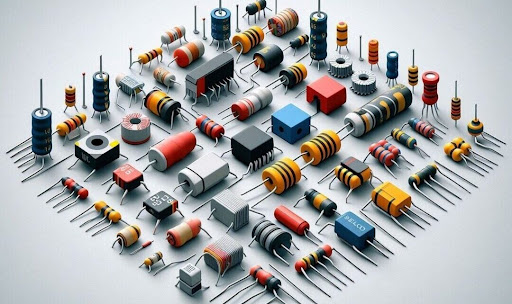The Need for Indigenous Electronics Components in India
The Need for Indigenous Electronics Components in India-blog
MFT
1/3/20253 min read


The Need for Indigenous Electronics Components in India
## Introduction
In recent years, India has emerged as a global player in the electronics sector. However, the country still relies heavily on imports for various electronic components. As we strive for self-reliance, the need for indigenous electronics components has become more pressing than ever. This blog explores the importance of developing local manufacturing capabilities, the challenges faced, and the potential benefits of promoting indigenous electronics in India.
## Why Indigenous Electronics Components Matter
### 1. Economic Independence
Relying on imported components can make India vulnerable to global supply chain disruptions. By developing indigenous electronics components, India can reduce its dependency on foreign suppliers, thus enhancing economic independence. This shift can lead to increased domestic production, job creation, and a more resilient economy.
### 2. Boosting the 'Make in India' Initiative
The Indian government has launched the 'Make in India' initiative to promote local manufacturing and attract foreign investment. By focusing on indigenous electronics components, we can align with this initiative, fostering innovation and entrepreneurship in the electronics sector. This will not only strengthen the local economy but also enhance India's global competitiveness.
### 3. Technological Advancement
Investing in indigenous electronics components encourages research and development (R&D) within the country. This focus on innovation can lead to the creation of cutting-edge technologies tailored to local needs. By fostering a culture of R&D, India can position itself as a leader in electronics innovation.
### 4. Job Creation
The electronics sector has the potential to create millions of jobs across various skill levels. By promoting indigenous component manufacturing, we can generate employment opportunities, particularly for skilled and semi-skilled workers. This will contribute to economic growth and improve living standards for many.
## Challenges in Developing Indigenous Electronics Components
While the need for indigenous electronics components is clear, several challenges must be addressed:
### 1. High Initial Investment
Setting up manufacturing facilities for electronic components requires significant capital investment. Many startups and small businesses may struggle to secure the necessary funding to establish production lines.
### 2. Skill Gap
The electronics manufacturing sector requires a skilled workforce. There is currently a gap in the availability of trained professionals, which can hinder the growth of indigenous component manufacturing.
### 3. Infrastructure Development
Robust infrastructure is essential for the growth of the electronics sector. Improvements in logistics, transportation, and power supply are necessary to support local manufacturing efforts.
### 4. Regulatory Hurdles
Navigating the regulatory landscape can be challenging for new and existing businesses. Streamlining regulations and providing incentives for local manufacturing can help overcome these hurdles.
## The Path Forward
To promote indigenous electronics components in India, several steps can be taken:
### 1. Government Support
The government can play a crucial role by providing financial incentives, subsidies, and grants to encourage local manufacturing. Policies that promote R&D and skill development should also be prioritized.
### 2. Public-Private Partnerships
Collaboration between the government and private sector can drive innovation and investment in indigenous electronics components. Establishing partnerships can facilitate knowledge sharing, resource allocation, and infrastructure development.
### 3. Skill Development Programs
Investing in skill development programs can help bridge the gap in the workforce. Collaborations with educational institutions and industry leaders can ensure that the workforce is equipped with the necessary skills to thrive in the electronics sector.
### 4. Awareness and Promotion
Raising awareness about the benefits of indigenous electronics components can encourage consumers and businesses to support local products. Campaigns highlighting the importance of 'Make in India' can foster a sense of pride and responsibility among citizens.
## Conclusion
The need for indigenous electronics components in India is crucial for achieving economic independence, boosting the 'Make in India' initiative, and driving technological advancement. By addressing the challenges and implementing strategic measures, India can pave the way for a robust electronics manufacturing ecosystem. Embracing local production not only strengthens the economy but also fosters innovation and creates a sustainable future for generations to come.
Moli Future Technologies
Pioneering local UAV drone technology for India.
Contact us
Support
+91-98977-20491
© 2024. All rights reserved.
